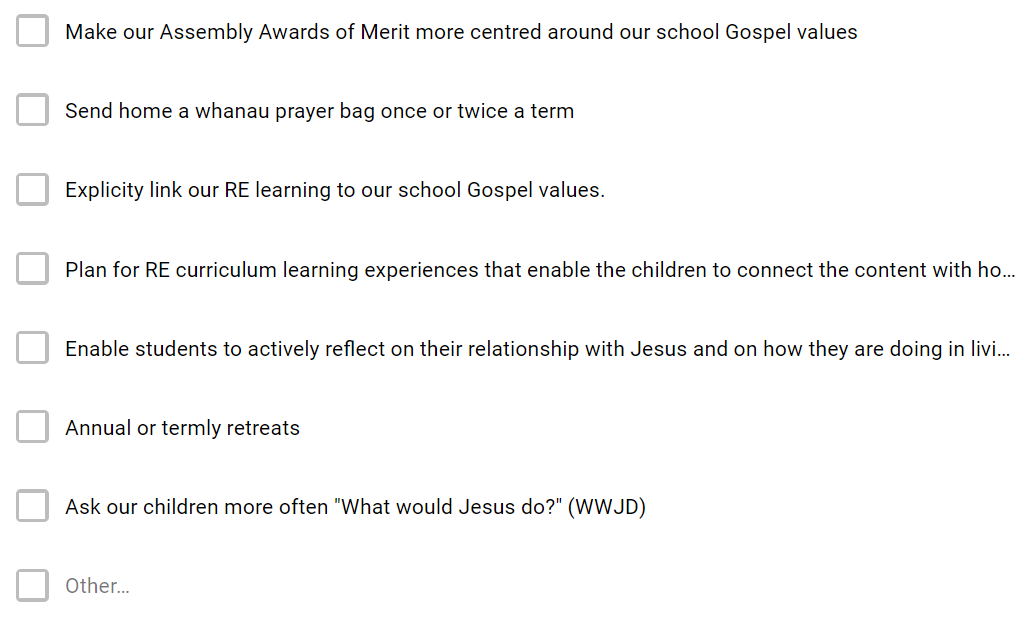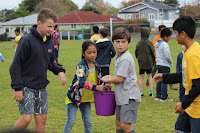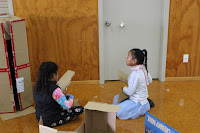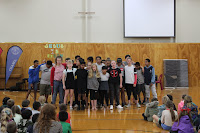Monday, November 25, 2019
Wednesday, November 13, 2019
DMIC Observation with MARTHA
Here is the DMIC lesson I used today when Martha observed.
Again I was nervous about doing it, but she was great in discussing each step with me along the way.
These are new things I picked up on:
Less of children putting hands up and more of me calling on them.
*More of me asking them to repeat what each other has been explaining.
*More of me asking them to justify their thinking.
*Taking the lesson where it needs to go as the needs arise (it turned out that most of them had forgotten how to calculate a unit fraction of an amount to then find the greater fraction, but the context for this learning made it all the richer!)
*Looking at where to take this next in terms of the needs that arose today - creating our own real-life problem, doing the same survey with OUR class and then calculating the fractions... they were nowhere near looking at the percentage situation as the fractions need focus for now..
I really enjoyed this lesson and am buzzing with new excitement for DMIC Maths!
Again I was nervous about doing it, but she was great in discussing each step with me along the way.
These are new things I picked up on:
Less of children putting hands up and more of me calling on them.
*More of me asking them to repeat what each other has been explaining.
*More of me asking them to justify their thinking.
*Taking the lesson where it needs to go as the needs arise (it turned out that most of them had forgotten how to calculate a unit fraction of an amount to then find the greater fraction, but the context for this learning made it all the richer!)
*Looking at where to take this next in terms of the needs that arose today - creating our own real-life problem, doing the same survey with OUR class and then calculating the fractions... they were nowhere near looking at the percentage situation as the fractions need focus for now..
I really enjoyed this lesson and am buzzing with new excitement for DMIC Maths!
Tuesday, November 12, 2019
Annual Plan 2019
I have updated the BOT three times on our progress in achieving Catholic Character goals as part of the Annual Plan.
Here is the evidence.
I believe it also summarises a lot of what I have done in my DRS role this year.
Here is the evidence.
I believe it also summarises a lot of what I have done in my DRS role this year.
Friday, November 8, 2019
Seesaw 2019
I have really enjoyed using Seesaw this year as a tool for home-school partnership and collaboration.
Jody and I shared a Seesaw page so it was wonderful to celebrate the work of all tamariki across our learning hub. It's also been wonderful to see parents like and comment on the posts of their children.
This has been a consistent way in which parents have been able to stay connected with their children's learning and to get a gauge of how it's been going for their children, judging from the learning evaluations their children have made as well as the quality of the content posted by their children.
Here is an example of posts (book reviews).
Jody and I shared a Seesaw page so it was wonderful to celebrate the work of all tamariki across our learning hub. It's also been wonderful to see parents like and comment on the posts of their children.
This has been a consistent way in which parents have been able to stay connected with their children's learning and to get a gauge of how it's been going for their children, judging from the learning evaluations their children have made as well as the quality of the content posted by their children.
Here is an example of posts (book reviews).
Monday, November 4, 2019
Writing Progress with Accelerant Group
I am very proud of the progress my accelerant writing group has made. Our team got the students to do a Quick Write to establish who could go in this accelerant group. We also discussed attitude when forming this group, so only akonga with a drive to move were put in the group. The other teachers planned workshops. I have had the accelerant writers for 3 weeks. Now we will extend it for three more. It's a great example of how our team collaboration has enabled acceleration for these learners (a group of 12 writers), to lift them to National Standard in writing.
Here is the team planning
Here is my own planning
Here is evidence of achievement in their use of commas.
Here is some evidence of their achievement in using improved vocabulary. (I could not access SEESAW for the children upstairs in Piripono 1 e.g. Toby and Theo)
YASH
MONTE
OLIVIA
OCTAVIA
CHARLIA
OLIVER F
Here is the team planning
Here is my own planning
Here is evidence of achievement in their use of commas.
Here is some evidence of their achievement in using improved vocabulary. (I could not access SEESAW for the children upstairs in Piripono 1 e.g. Toby and Theo)
YASH
MONTE
OLIVIA
OCTAVIA
CHARLIA
OLIVER F
Tuesday, September 10, 2019
Learner Agency in Reading
One way in which Jody and I have tried to accelerate learning through our collaborative teaching, is by sharing the teaching of reading for the akonga in our learning hub (Piripono 2).
So I have taken a larger group of 28 which she has taken the other 20 in a smaller group.
This term I had my group do an asttle reading test and then analyse their own learning pathway to establish goals, then to make an action plan as to how to achieve their reading goals.
It's been successful for the more self-directed, self-monitoring learners, but there has been a group of approx. 8 who I have had to very much guide through the process, which can be frustrating!
It's been great to see the independence and self-direction from a lot of the others though.
Here is Sophia's action plan..

So I have taken a larger group of 28 which she has taken the other 20 in a smaller group.
This term I had my group do an asttle reading test and then analyse their own learning pathway to establish goals, then to make an action plan as to how to achieve their reading goals.
It's been successful for the more self-directed, self-monitoring learners, but there has been a group of approx. 8 who I have had to very much guide through the process, which can be frustrating!
It's been great to see the independence and self-direction from a lot of the others though.
Here is Sophia's action plan..
Wednesday, September 4, 2019
DMIC Maths Observation 4 September
Today Trevor came to observe me take a DMIC lesson. I was anxious about it so he guided me through the process. I used a STAGE 7 GLOSS fractions question (which he liked!)
I was so stunned that the children managed to solve it and shared their thinking excellently through diagrams. Interestingly most of them cannot solve this problem on their own in the GLOSS diagnostic interview with me! But the collaboration led to deeper understanding. They even established a new rule/pattern which I hadn't expected. This was very rich learning so I'm looking forward to implementing more DMIC lessons.
I was so stunned that the children managed to solve it and shared their thinking excellently through diagrams. Interestingly most of them cannot solve this problem on their own in the GLOSS diagnostic interview with me! But the collaboration led to deeper understanding. They even established a new rule/pattern which I hadn't expected. This was very rich learning so I'm looking forward to implementing more DMIC lessons.
Monday, August 12, 2019
Tuesday, July 30, 2019
Friday, July 19, 2019
RE Inquiry
This was the report I submitted to the BOT this month, reporting on Self-Review in RE for 2019








February 2019 - December 2019 (ongoing)
- Focus: How successfully are we facilitating an ongoing encounter with Christ at our school?
- The Process
We began with a survey of parents at Term 1 Meet the Teacher Evening in February,
Our questions and responses were
- What do you think our school does well to enable your tamariki to encounter Jesus and grow in relationship with Jesus?
*Fostering a relationship with Jesus through our teaching of the RE curriculum
- What do you think we could do to improve your child's relationship with Jesus?
*key to full answers on next page
Findings: This whanau survey was very affirming for us in terms of our community identifying a range of ways in which we successfully facilitate an ongoing encounter with Christ for our ākonga, particularly through our classroom prayer, Masses and liturgies. The two areas for further scoping and development which we picked up on, were daily meditation and opportunities for our ākonga to reflect on their relationship with Jesus.
3. How the outcome of this review is expected to enhance the Catholic Special Character of our school.
Using Daily Meditation to Facilitate an Ongoing Encounter with Christ.
Our first step after the initial whanau survey in February was then to ensure that daily meditation is up and running in classes each afternoon. Our focus for one of our RE Staff Meetings in February was around Christian Meditation and on 30 July (Term 3), Fr. Peter Murphy will facilitate another session on this with staff.
In Term 2 the DRS gathered teacher and student voice around how Daily Meditation is going. This was also a good opportunity for ākonga to reflect on their relationship with Christ.
On 19 July, 16 teachers attended the One Wise Man PLD Day, lead by Fr. Richard Leonard, with a rich focus around encounter with Christ.
On 30 July, before Fr. Peter begins his PLD about Christian Meditation, the DRS will show the staff the findings of our Meditation Staff and Student surveys from last term, so that they can celebrate and reflect on some of the successes and challenges so far as we move forward with Fr. Peter on this.
Findings of Staff Survey
All teachers are meditating with their ākonga three-four times per week. The amount of time the children meditate ranges from 2 to 5+ minutes. Older children are generally the ones who are meditating for longer. Here is some further feedback.
What do you find have been the benefits of Daily Meditation for you and your ākonga?
|
What are the challenges of Daily Meditation for you and your ākonga?
|
Do you think that non-classroom staff should be participating in Daily Meditation also?
|
Have you any further comments?
|
Settles students
|
Time on sportsday
|
If in class
| |
Calmer
|
The children that disrupt others.
|
They do if present in the class.
| |
Students settle well to learning after meditating. They have a positive attitude about it generally and are open to the benefits of meditation
|
Some of the boys really find it difficult to close their eyes and sit still.
|
Yes as it's in-keeping with our special character and good role-modelling.
|
Classes going to Sport in the afternoons should be aware the school is meditating, maybe hold off a few minutes or go quietly at 1:40?
|
I find that it settles the students straight after lunch and allows them to have time to focus on themselves and their own prayers.
|
Getting the children ready for meditation, once they have begun they proceed really well.
|
It is a really enjoyable and peaceful moment of the day that can benefit all people in or out of the classroom.
| |
Settles students after lunch. For some specific students it allows them the chance to let go of things that have happened during lunch time
|
Students arriving late to class and coming in after meditation has begun.
|
Yes
|
It is great. Wish I had been using it long before this
|
Calming down after playtime, refocus ready for learning after lunch
|
Some students struggle to maintain sacred silence, fidgetting
|
Yes, if they are in the classroom they do take part
| |
It makes them quiet.
|
The fact that we have no time to do our current curriculum so ends up being something that we have to squash in.
|
They aren't in our room then.
|
No thank you
|
Peaceful calm reflective students
|
The usual students who need transitioning after lunch can be disruptive as they still have "issues on top" that need dealing with before they are ready to meditate.
|
Sure
| |
Relaxed students. sets up for great learning in the afternoon. Calms down children if they have been upset during lunchtime.
|
None now. Took a few weeks for the children to get used to sitting/lying down quietly and and bring still but are experts now.
|
That would be nice.
| |
Nice chance to stop and be int he moment
|
fitting it in when we are so time poor and have so much to fit into our days - leaders/duties - kids all over the place - coming in at different times.
|
If it is expected of everyone - then yes I do
|
no thank you
|
Calming students after break
|
Having students arriving on time at mediation starts straight after lunch and not disturbing those who have settled.
|
Yes, If they are in the classroom with the students, otherwise Teacher Aides working or moving students in and out of the class disrupt the silence.
|
Most children are able to self manage themselves into settling into mediation.
|
an acknowledgment of 'kind acts' & respect for other's personel space - as Jesus would do.
encourages a gentleness within the mood of the class
often mediation reflection time is encouraged to share with others in their home
has encouraged students to become involved in incorporating their ideas into their mediation time/theme
|
it is a learning process - of physical "stillness" and having to experience the "stillness of throught" - but I am always happy with involvement
|
should be their preference from an invite
| |
Peaceful classroom, clam to start the afternoon after lunch time.
|
getting started can be a challenge depending on how the children have come in from lunch.
|
its a lovely time to reflect so wouldn't see why not. If we are wanting to do it as a whole school.
|
Findings of Student Meditation Survey
(Scale of 1-5)
Sunday, July 7, 2019
DMIC Visit - MATHS
Trevor visited (FROM DMIC MATHS) to model a DMIC lesson. The children were engaged and keen to share their thinking. The mixed-ability is interesting as the weaker Maths learners were learning from their peers. It was great to see the children take ownership; explaining, illustrating and justifying their thinking to the other groups.
I'm looking forward to having a go at using this problem-solving approach, although a bit daunted by it. I hope I will be able to take the children in the direction they need to go, picking up on the gaps that arise at the time.
I'm looking forward to having a go at using this problem-solving approach, although a bit daunted by it. I hope I will be able to take the children in the direction they need to go, picking up on the gaps that arise at the time.
Monday, July 1, 2019
Tuesday, June 25, 2019
Unpacking TAPASA
Today we unpacked the TAPASA document at staff meeting. This includes competencies in teaching Pasifika learners.
There was valuable discussion around all three TURU in relation to our own Pacific Community.
.
.
Tuesday, May 28, 2019
Catholic Schools' Day
For Catholic Schools’ Day on Tuesday, Years 0-7 tamariki came to school in house colour mufti, the proceeds of which went to Caritas relief work in South Sudan. They started their day with morning prayer in the hall, followed by Caritas lessons in the classrooms, learning about life in South Sudan. Luckily the rain subsided for the middle block, during which the children met their houses to participate in Caritas Challenges, so that they could walk in the shoes of children of South Sudan. These were called MOVE IT, SWEAT IT, CARRY IT and LIVE IT. More information is included below. Our Year 7s lead a thought-provoking liturgy in the hall in the afternoon, which was followed by quiet reflection time back in our rooms.
LIVE IT! For this challenge the children had to make cardboard shelters. There are millions of refugees in South Sudan who have to set up home in temporary shelters. Our tamariki worked well together to build their shelters. Special thanks to Music Mania and Elite Appliance Servicing for giving us so many cardboard boxes, as well as families who dropped some off during the last month.
MOVE IT! This involved walking around the block for 25 minutes, in order to imagine walking long distances, as children in South Sudan would. The older children were very supportive of younger children during this walk. Here is a photo of the Costello House ready to move it!
SWEAT IT! For this, the children did some chores around the school - car washes, weeding, picking up rubbish, wall-washing and dusting classrooms. Great acts of service!
CARRY IT! Children lined up and passed buckets of water to one another to fill a clam shell. The leaders worked hard to run to the tap to fill their buckets! The older children were also very supportive of the younger ones in carrying the water. 40% of people in South Sudan have to walk 30 minutes or more to access water, which they then carry back! Sadly, 30% of them do not have access to safe water. Also on Catholic Schools’ Day, Our Year 8 ākonga attended a Mass at Holy Cross, Papatoetoe, along with the other South Auckland Catholic Schools in our Kahui Ako. They represented us beautifully.
LIVE IT! For this challenge the children had to make cardboard shelters. There are millions of refugees in South Sudan who have to set up home in temporary shelters. Our tamariki worked well together to build their shelters. Special thanks to Music Mania and Elite Appliance Servicing for giving us so many cardboard boxes, as well as families who dropped some off during the last month.
MOVE IT! This involved walking around the block for 25 minutes, in order to imagine walking long distances, as children in South Sudan would. The older children were very supportive of younger children during this walk. Here is a photo of the Costello House ready to move it!
SWEAT IT! For this, the children did some chores around the school - car washes, weeding, picking up rubbish, wall-washing and dusting classrooms. Great acts of service!
CARRY IT! Children lined up and passed buckets of water to one another to fill a clam shell. The leaders worked hard to run to the tap to fill their buckets! The older children were also very supportive of the younger ones in carrying the water. 40% of people in South Sudan have to walk 30 minutes or more to access water, which they then carry back! Sadly, 30% of them do not have access to safe water. Also on Catholic Schools’ Day, Our Year 8 ākonga attended a Mass at Holy Cross, Papatoetoe, along with the other South Auckland Catholic Schools in our Kahui Ako. They represented us beautifully.
Subscribe to:
Comments (Atom)

















































































